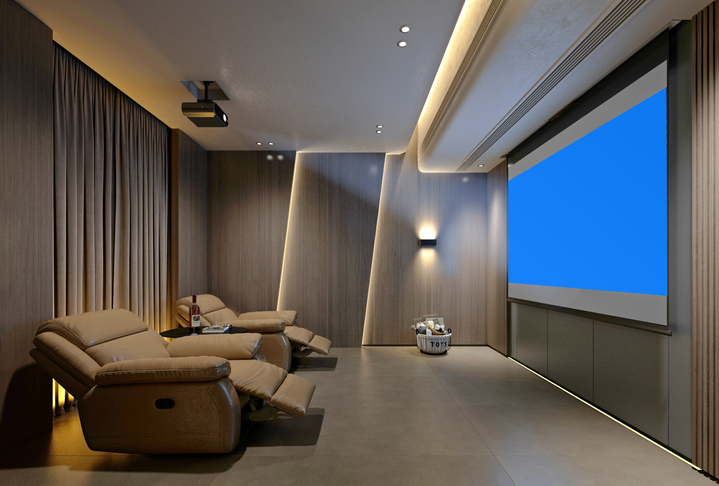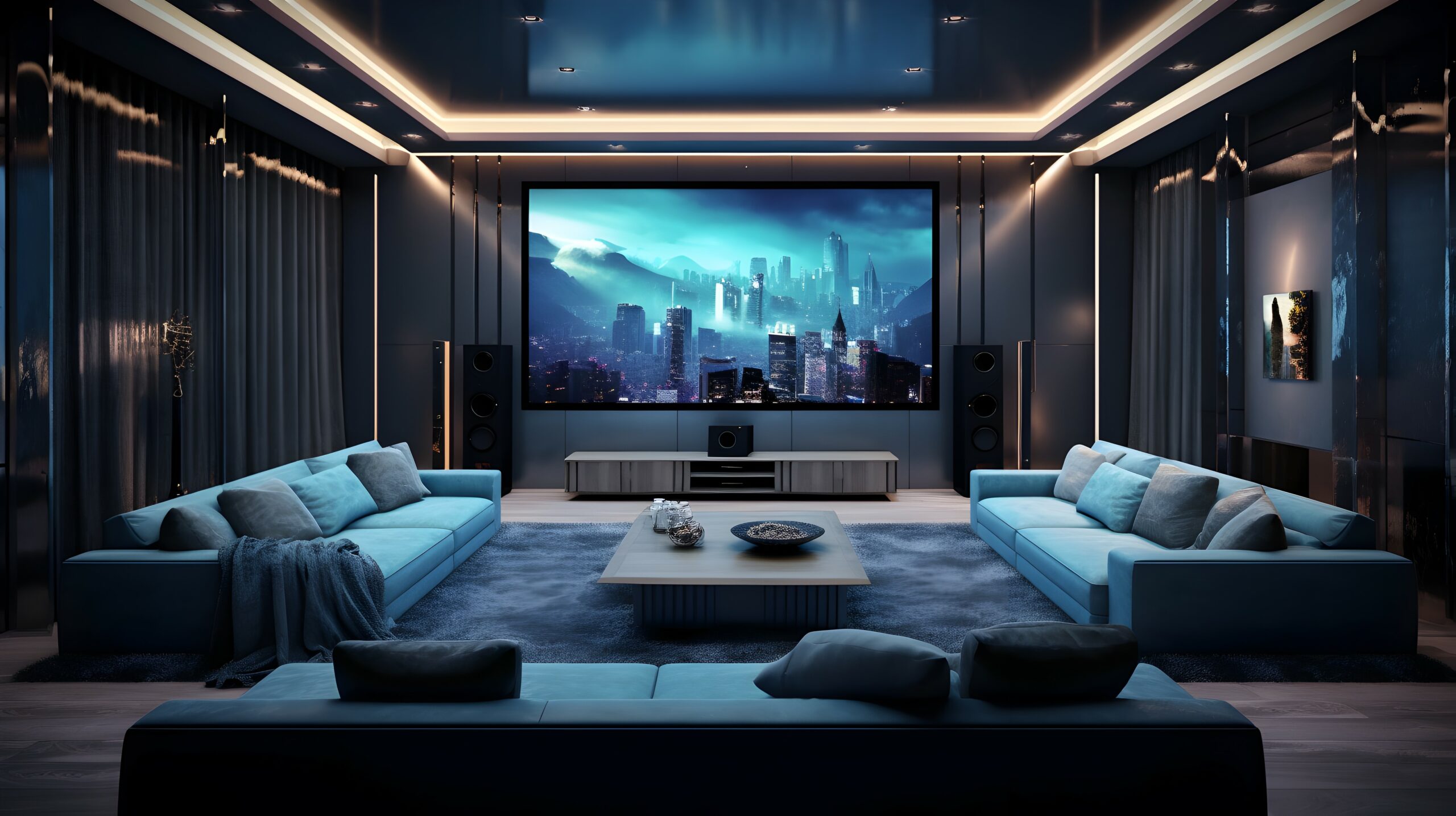Home Theater 101: Every Little Thing You Required to Know for a Motion Picture Experience in the house
Creating a home theater that rivals the motion picture experience of a business theater includes cautious consideration of several elements, including screen choice, sound systems, and space format. Whether you are contemplating the excellent screen size or the intricacies of surround sound, comprehending these principles is crucial.
Picking the Right Screen
When establishing a home theater, selecting the right display can make or damage the viewing experience - tampa home theater. The screen acts as the focal point of your configuration, influencing photo high quality, checking out angles, and general aesthetic. Trick factors to take into consideration consist of display type, resolution, and size
First, establish the ideal screen dimension based upon your area measurements and seating range. A basic guideline is to rest roughly 1.5 to 2.5 times the diagonal display size for ideal viewing. Next off, choose between numerous screen kinds, such as fixed-frame, motorized, or retractable screens, each offering distinct benefits. Fixed-frame screens commonly supply the very best picture quality, while motorized alternatives enable for flexibility in space use.
Resolution is another important factor. For a genuinely immersive experience, think about a display designed for 4K and even 8K web content, making sure intensity and quality. In addition, consider the screen's gain, which impacts illumination and contrast; a greater gain can enhance brightness in well-lit rooms, while a reduced gain may be better for darker settings.
Choosing Audio Equipment
Audio devices is an essential component of any home movie theater system, substantially boosting the overall viewing experience. The choice of audio gear can determine the deepness, quality, and immersion of audio, crucial for producing a cinematic atmosphere.
When choosing audio equipment, consider a border sound system, which generally consists of a receiver, several audio speakers, and a speaker. A 5.1 or 7.1 channel system is suggested, where the first number represents the speakers and the 2nd the subwoofer, supplying an immersive soundscape. The receiver is the heart of the system, managing audio and video signals, and must sustain contemporary styles like Dolby Atmos for an improved spatial experience.
Quality speakers are crucial; search for versions that supply a well balanced sound account with great bass action. Floor-standing audio speakers can produce richer audio, while shelf choices save room. Furthermore, take into consideration wireless alternatives for convenience of setup, although wired systems often deliver exceptional efficiency.

Optimal Seating Plans
Producing an excellent home cinema experience hinges considerably on optimal seating plans. The plan of seats plays a critical function in both convenience and checking out high quality, directly impacting the total cinematic experience.
First, consider the screen dimension and watching range. A typical standard is to position seats at a distance around 1.5 to 2.5 times the angled size of the display. This guarantees an immersive experience Get More Information without stressing the eyes.
Next, elevation is important. The back rows must be greater than the front to prevent obstructions if your seating is in a tiered format. For flat seats, guarantee that the front row is not also near the display, and that every person has a clear line of view.
Additionally, consider the arrangement in regards to social dynamics. Team seating can enhance the common experience, while individual seats might be preferred for individual viewing.

Finally, focus on comfort with ergonomic seating that sustains extensive viewing durations. Incorporating reclining chairs or cushioned seats can significantly boost the experience, making the home theater a favored location for both amusement and leisure.
Lighting and Ambiance
Efficient lighting and setting are vital parts of a well-designed home movie theater, as they substantially affect the viewing experience. The best illumination can improve the motion picture feel, while inadequate choices can take away from it. For optimum results, take into consideration a split lighting technique that includes ambient, task, and accent illumination.
Ambient lights gives basic lighting, ensuring that the area is not totally dark, which can stress the eyes. site here Dimmer buttons are extremely advised, enabling changes based upon the web content being watched. Task lighting, such as wall sconces or floor lights, offers functional illumination for activities like reading or browsing the area without disrupting the overall environment.
Accent lights can be made use of to highlight architectural attributes or develop centerpieces, adding depth and interest to the area. LED strip lights behind displays or along shelves can supply a refined glow that boosts the aesthetic experience without overwhelming the audience.

Wiring and Installation Tips
A tactical circuitry configuration is essential for attaining optimal performance in your house theater system. Proper wiring not just guarantees top notch sound and video signals but likewise boosts the overall visual of your area. Begin by mapping out your design, determining where each part will certainly be put, including your screen, speakers, and receiver.
When selecting wires, prioritize top notch, suitably evaluated wiring to minimize signal loss. HDMI cable televisions should be used for video clip connections, while audio speaker wire must match the specs of your audio speakers and amplifier. Go with in-wall ranked cords to abide by safety and security criteria and preserve a tidy appearance.

Conclusion
In summary, producing an exceptional home movie theater experience needs cautious consideration of numerous components, including screen selection, audio devices, seating arrangements, lighting, and electrical wiring. By prioritizing these aspects, a motion picture atmosphere can be successfully replicated, allowing for immersive seeing experiences that measure up to conventional cinema Recommended Reading setups.
Developing a home cinema that measures up to the cinematic experience of a commercial theatre involves careful consideration of several elements, including screen selection, sound systems, and room format.When establishing up a home cinema, choosing the ideal display can make or damage the seeing experience. Next, select between various display kinds, such as fixed-frame, motorized, or retractable screens, each offering distinctive advantages. For a genuinely immersive experience, take into consideration a screen created for 4K or also 8K content, ensuring intensity and clearness.In summary, producing a phenomenal home theater experience calls for careful consideration of various aspects, consisting of display selection, audio devices, seating plans, illumination, and electrical wiring.